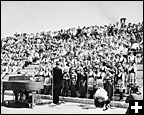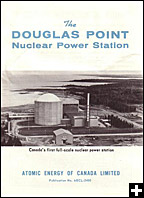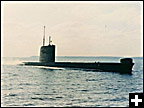Common menu bar links
Canadian Statistics in 1967: One hundred years of Canadian Statistics!
Archived Content
Information identified as archived is provided for reference, research or recordkeeping purposes. It is not subject to the Government of Canada Web Standards and has not been altered or updated since it was archived. Please contact us to request a format other than those available.

On January 1, 1957, Walter Elliot Duffett was appointed Dominion Statistician of the Dominion Bureau of Statistics after his predecessor, Herbert Marshall, retired. Duffett was central in establishing the use of computers and scientific methodology for planning and processing surveys.
Duffet also oversaw implementation of the most far-reaching changes in the bureau’s organization to date. The Royal Commission on Government Organization—popularly known as the Glassco Commission—was appointed to report on and make suggestions about the operation of the Government of Canada. As a result of this report, on January 25, 1965, the Dominion Bureau of Statistics was given the status of a separate government department and the Dominion Statistician the ranking equivalent of a deputy minister.
The centennial edition of the Canada Year Book
The Canada Year Book series provides an elaborate and detailed statistical history of Canada. The preface to the centennial edition proudly declares that “throughout these one hundred years the story of the country’s progress—economic, social and legislative—has been recorded in the Canada Year Book.... Thus, the whole series of Year Books constitutes an official record of a century of Canada’s progress.”
The 1967 edition of the Canada Year Book was produced by Margaret Pink. Pink started as an assistant to the editor of the book in the 1940s and rose to prominence as chief of the section for the 1957/1958 edition of the Canada Year Book—the first woman in the bureau to be chief of this section.
Educating Canadians

The population of Canada, according to the 1961 Census, was 18,238,247 people—up from 14,009,429 ten years earlier. Some of that population growth was a result of immigration (1,542,853 people), but most was a result of natural increase (3,148,198 people).
By 1961, 70% of Canadians lived in cities or towns, and 53% lived in one of Canada’s urban centres or in a suburb of one. The numbers making a livelihood in agriculture had begun to decline decades before, and by 1961 only 12% of Canadians lived on farms.
Following the doubling of elementary and secondary school enrolment and the drastically increased enrolment in universities and other postsecondary educational institutions in the 1960s, the Dominion Bureau of Statistics developed improved statistical programs to measure aspects of education in Canada. In 1965/1966, there were 3.8 million Canadians in elementary schools, 1.3 million in secondary schools, and 210,000 in universities and colleges. In contrast, there were 2.8 million in elementary schools, 650,000 in secondary schools and only 79,000 in universities and colleges in 1956/1957.
Powering Canada
The 1961 Canada Year Book states that “electric power development in Canada has undergone remarkable and sustained growth since the beginning of the century. From a modest 133,000 kilowatts of generating capacity installed at the end of 1900, Canada’s installed hydro capacity rose to almost 21,800,000 kw. by the end of 1965, and thermal capacity to 7,600,000 kw.”
Canada’s hydro-electric potential overshadowed that of thermal energy to power the country. In 1965, thermal energy represented 26% of Canada’s total electric generating capacity and accounted for 18% of the total energy produced for the year.

In 1962 Canada broke ground in power generation when a 20,000-kilowatt Nuclear Power Demonstration Station in Rolphton, Ontario, began feeding nuclear thermal power into a distribution system in the province. The country’s first full-scale nuclear power station at Douglas Point on Lake Huron began commercial production at the end of 1966.
Economic aggregates and productivity trends
As industries developed, a system of national accounts was needed to understand the Canadian economy. The 1967 edition featured comprehensive but concise information on the economy. It presented a set of accounting summaries that showed economic activity in terms of transactions that took place between different sections of the economy.
Canada’s economy was booming. The gross national product grew 10.2% from 1963 to 1964 and 9.6% from 1964 to 1966. Investment in non-residential construction and machinery and equipment rose 17% from 1964 to 1965, and was especially high for the manufacturing industry and electric power, gas and water utility companies.

By the mid-1960s, the Dominion Bureau of Statistics began to write productivity studies so they could measure Canada’s international competitiveness in the world. These studies were useful in guiding government policy because they examined the relationship between output, employment, earnings and prices, and they focused on problems at a deeper level than ever before. The average annual rate of growth of output per person employed in Canada’s agricultural industries was 5.3% from 1946 to 1965. This was much higher than commercial industries as a whole, at 3.3%, and manufacturing industries in particular, at 3.4%, in the same period.
Canadian warriors and peacemakers

By 1967 Canada was establishing itself as an international military power. It co-operated with organizations like the United Nations (UN) and participated in the North American Air Defence Agreement, more commonly known as NORAD. On “Aug. 1, 1964, the Headquarters of the Royal Canadian Navy, the Canadian Army and the Royal Canadian Air Force were integrated to form a single Canadian Forces Headquarters (CFHQ) under a single Chief of Defence Staff,” and it reported to the minister of the Department of National Defence.
By December 1966, the Royal Canadian Navy had 42 ships in commission and one operational submarine—the Ojibwa—which completed her first year as part of the Atlantic Fleet in Halifax. According to the 1967 edition of the Canada Year Book, “the Canadian Armed Forces continued to provide forces in support of United Nations operations”: 794 officers and men were part of UN Emergency Forces in the Middle East; 880 officers and men were deployed in Cyprus; another 39 officers and men contributed to UN missions in Palestine, Kashmir and Korea; and other forces were sent to destinations like Vietnam, Cambodia, Laos, Ghana and Tanzania.
In 1966, the Royal Canadian Air Force had 3 CF-101B interceptor squadrons, 2 Bomarc surface-to-air missile squadrons and 29 radar sites.
